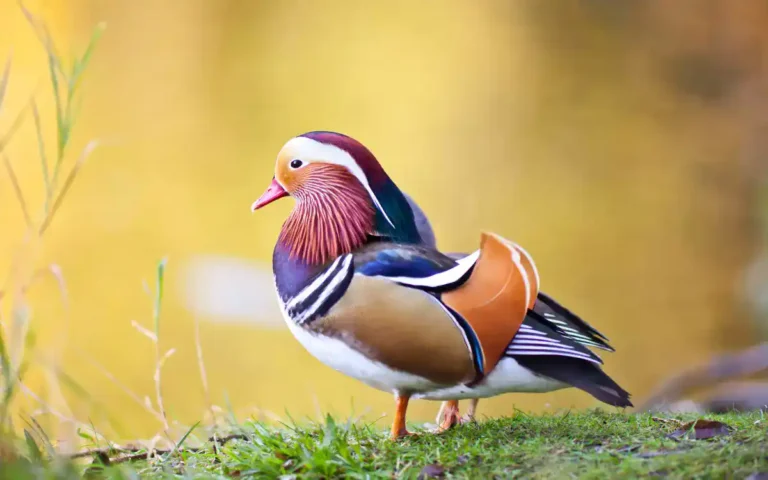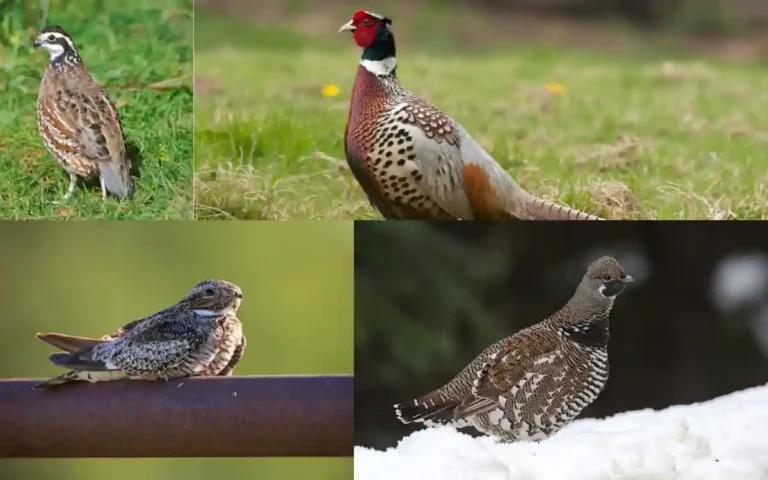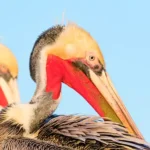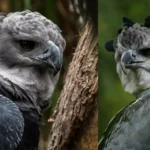Peacocks are attractive and beautiful birds known for their colourful feathers. 25 interesting facts on our list! Reveal the secrets of their amazing tail feathers, special behaviors, and much more. Dip into the details that make the peacock a truly spectacular bird.
| Fact | Description |
|---|---|
| Scientific Name | Pavo cristatus |
| Habitat | Forests, grasslands, and open woodlands |
| Range | South Asia, including India and Sri Lanka |
| Size | Males: 7 Feet (including tail), Females: 4 Feet |
| Distinctive Feature | Vibrant iridescent plumage and ornate tail feathers |
| Feather Display | Males fan out feathers in a striking courtship display |
| Diet | Omnivorous; eats insects, plants, and small animals |
| Lifespan | 10-25 years in the wild, up to 50 years in captivity |
| Social Behavior | Generally non-migratory; live in small groups called “musters” |
| Predators | Tigers, leopards, and large birds of prey |
| Conservation Status | Least Concern (IUCN Red List) |
| Cultural Significance | National bird of India; symbol of beauty and grace |
List of 25 Facts About Peacocks:
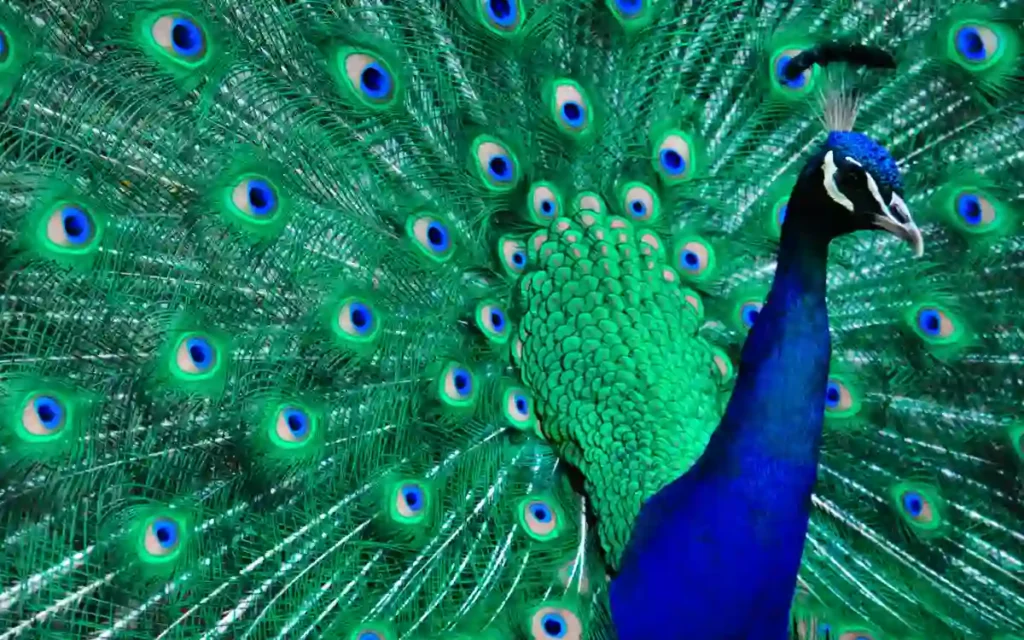
Peacocks, scientifically known as Pavo cristatus, are among the most recognizable birds globally, thanks to their striking appearance. Native to South Asia, these birds have long been associated with beauty, grace, and mystique. As we embark on this journey to uncover 25 peacock facts to know, prepare to be amazed by their captivating world.
The Majesty of Peacock Feathers:
1. Opulent Plumage
Peacock feathers are renowned for their iridescent beauty. These vivid colors are not due to pigments but arise from the microscopic structure of the feathers. When light reflects off them, it creates the stunning colors we admire.
2. The Peacock’s Tail
The peacock’s tail, with its distinctive ‘eye’ patterns, is one of the most iconic features of this bird. Surprisingly, it’s not just for show. Peacocks use their tails in courtship displays to attract peahens.
3. Shedding Feathers
Peacocks molt their feathers annually. This process ensures their plumage remains vibrant and in prime condition.
Read also:-
Behavior and Lifestyle:
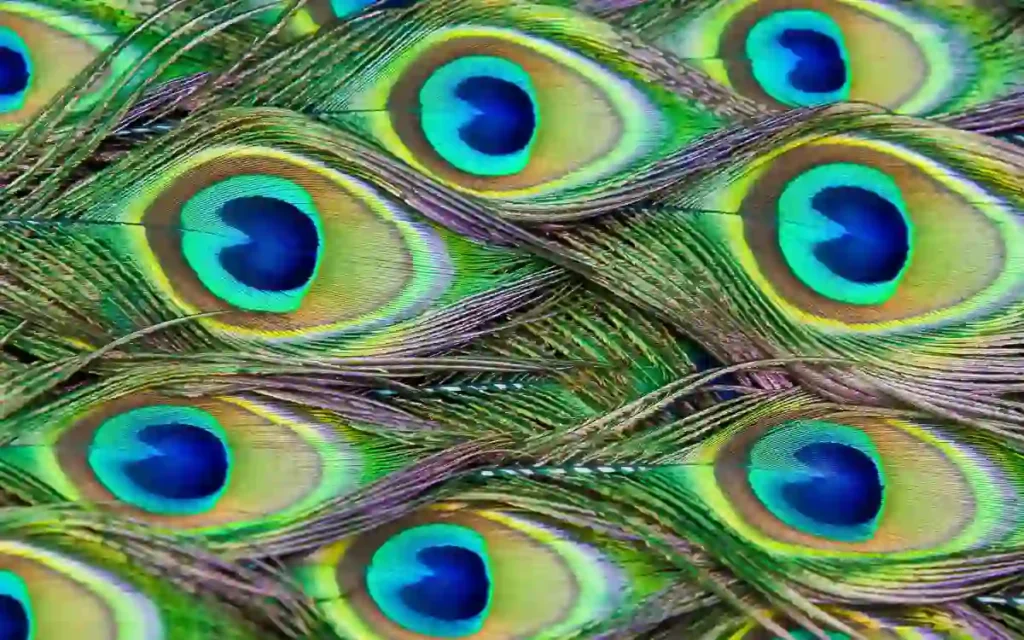
4. Peafowl Species
Peafowls consist of three species: the Indian Peafowl (Pavo cristatus), the Green Peafowl (Pavo muticus), and the Congo Peafowl (Afropavo congensis). Each has unique traits.
5. Courtship Rituals
Male peacocks display their magnificent plumage to attract females during elaborate courtship rituals, which involve fanning out their tail feathers and dancing.
6. Diet Diversity
Peacocks are omnivores and have a varied diet that includes insects, plants, small mammals, and even reptiles.
7. Lifespan
In the wild, peacocks typically live for 10-25 years. However, in captivity, they can live longer, often exceeding 40-50 years.
The Peacock’s Vocalizations:

8. Vocal Range
While known for their visual displays, peacocks are also vocal birds. They produce loud calls that can be heard up to 1.5 miles away.
9. Roaring at Night
During mating season, peacocks often call out loudly at night, contributing to their mystical reputation.
10. Warning Calls
Peacocks use their vocalizations to alert the flock to potential threats, helping to keep them safe.
Habitat and Distribution:
11. Native Habitat
Peacocks are native to the Indian subcontinent and thrive in grasslands, forests, and near water sources.
12. Global Distribution
Due to their allure, peacocks have been introduced to various parts of the world and can be found in many countries beyond their native range.
The Fascinating Life Cycle:
13. Egg-laying
Peahens lay 4-8 eggs in a hidden nest, where they incubate them for about a month.
14. Colorful Chicks
Baby peacocks, called peachicks, are born with soft, downy feathers and gradually develop their vibrant plumage as they grow.
15. Maturity
Peacocks typically reach maturity at around two years of age.
Protection and Conservation
16. Threats
Peacocks face threats such as habitat loss and poaching for their feathers and meat.
17. Protected Status
In some countries, peacocks are protected by law to ensure their survival in the wild.
Mythology and Symbolism:
18. Cultural Significance
Peacocks have played important roles in the mythology and culture of various civilizations, including ancient Greece, India, and Persia.
19. Symbol of Beauty
In Hinduism, the peacock is associated with the goddess Saraswati and is a symbol of beauty and knowledge.
Know about: 25 Macaw Facts You Should Know
Fun and Quirky Peacock Facts:
20. Elaborate “Eye” Patterns
The “eye” patterns on a peacock’s feathers are not only aesthetically pleasing but also serve to startle potential predators.
21. Territorial Birds
Peacocks can be territorial and may engage in occasional skirmishes to protect their territory.
22. Flying Abilities
Despite their large size and heavy plumage, peacocks can fly. They use this ability to escape danger or reach roosting spots.
23. Stunning Speed
Peacocks are surprisingly fast runners and can reach speeds of up to 45 mph (72 km/h).
24. Perching Habits
At night, peacocks prefer to roost high in trees to avoid ground-level predators.
25. Community Roosting
Peacocks often roost in groups, which provides safety in numbers and helps them stay vigilant against threats.
FAQs:
Q: Do peacocks make good pets?
A: While they are stunning birds, peacocks are not typically recommended as pets due to their specialized care requirements and territorial behavior.
Q: Can peacocks fly long distances?
A: Peacocks can fly short distances, usually to reach a safe perch or escape danger, but they are not long-distance fliers.
Q: Are white peacocks a different species?
A: No, white peacocks are not a separate species but rather a color variation of the Indian Peafowl (Pavo cristatus).
Q: What do peacocks eat in captivity?
A: In captivity, peacocks can be fed a diet of grains, seeds, insects, and fruits.
Q: How do peacocks defend themselves?
A: Peacocks rely on their loud vocalizations, flying abilities, and group roosting to defend themselves against predators.
Q: Can peacocks swim?
A: Peacocks are not strong swimmers and tend to avoid water whenever possible.
Conclusion:
Peacocks are not just birds; they are living works of art , with colorful feathers and special behaviors. These 25 facts highlight their beauty and the wonders of nature they represent. Learning about peacocks can inspire us to appreciate and protect wildlife.

